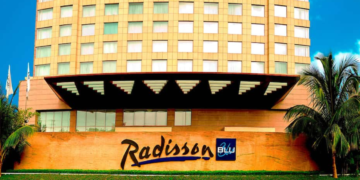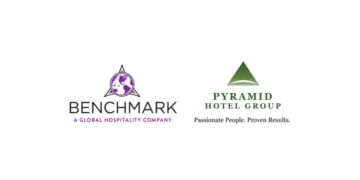In a dynamic reflection of Canada’s motel enterprise, CoStar’s October 2023 records unveils each monthly fluctuations and a constant trend of 12 months-over-yr increase. As a leading provider of online actual estate marketplaces, facts, and analytics in the belongings markets, CoStar’s insights shed light at the performance of Canada’s Hotels, showcasing exceptional figures and patterns in occupancy rates, common everyday rates (ADR), and sales in line with available room (RevPAR).
October 2023 Overview (Percentage Change from October 2022):
According to the file the occupancy rate accelerated by means of 2.2%, the average each day price by using eight.8%, and the revenue in line with to be had room through 11.2%. Laura Baxter, CoStar Group’s director of hospitality analytics for Canada, emphasizes the fantastic trajectory, declaring, Following three months of single-digit, yr-over-yr growth, RevPAR grew double-digits for the first time due to the fact June. This surge in RevPAR marks a enormous milestone, underscoring the resilience and restoration of Canada’s in quarter.
Baxter similarly elaborates on unique performance indicators:
Full-Service and Urban Hotels Shine
Full-service and urban accommodations have emerged as key drivers of the industry’s high-quality performance, demonstrating resilience and flexibility in the face of evolving marketplace conditions.
- Weekday Occupancy Surge: Weekday occupancy in downtown Vancouver surpassed pre-pandemic tiers for the primary time when you consider that March, indicating a strong return of enterprise journey. This resurgence of corporate demand is a welcome signal for city lodges, which have been closely reliant on entertainment travel at some point of the pandemic.
- Group Demand Revival: While nevertheless beneath pre-pandemic tiers, group call for confirmed signs and symptoms of recovery, with organization prices surpassing 2019 tiers via 26%. This boom is encouraging for full-service hotels, which often depend on institution bookings for a widespread component of their revenue. The outpacing of the temporary rate index with the aid of institution rates suggests that groups are willing to pay a top class for organization travel reports.
Factors Driving Success: The achievement of complete-carrier and concrete motels may be attributed to several elements, including:
- Adaptability to Changing Demand: These accommodations have proven flexibility in adjusting their services and services to cater to the evolving wishes of both business and leisure vacationers.
- Emphasis on Guest Experiences: Full-service and urban hotels have prioritized creating tremendous visitor experiences, leveraging their services, facilities, and personalised offerings to differentiate themselves from competition.
- Strategic Location Advantages: Urban motels advantage from their proximity to commercial enterprise districts, sights, and transportation hubs, making them appealing to each commercial enterprise and amusement vacationers.
Addressing Challenges: Despite their high-quality overall performance, complete-carrier and urban inns face challenges, inclusive of Rising Operational Costs these lodges often have higher operational charges compared to their restricted-carrier counterparts, because of elements such as staffing, preservation, and amenities.
Competition from Alternative Accommodations the rise of alternative accommodations, consisting of brief-term leases and vacation rentals, has improved competition for traditional hotels. Evolving Traveler Preferences Traveler alternatives are constantly evolving, and motels must hold pace with these modifications to stay competitive.
Regional Disparities

Hotel performance varied across Canada’s provinces and territories, reflecting regional differences in economic conditions, travel patterns, and tourism infrastructure.
Nova Scotia: A Beacon of Resilience: Nova Scotia recorded the highest October occupancy level at 75.0%, demonstrating resilience despite a 6.3% decline from 2022. The province’s strong occupancy can be attributed to its attractive natural landscapes, vibrant coastal communities, and well-established tourism industry.
Prince Edward Island: Facing Challenges: Prince Edward Island reported the lowest occupancy among provinces at 56.0%, experiencing a significant 25.8% drop from 2022. This decline is likely due to a combination of factors, including the island’s smaller population base, limited transportation infrastructure, and potential challenges in attracting tourists during the shoulder season.
Vancouver: Leading the Major Markets: Vancouver emerged as the leading major market with the highest occupancy at 77.7%, slightly ahead of October 2022. The city’s strong occupancy is driven by its diverse economy, international appeal, and reputation as a hub for business, culture, and tourism.
Edmonton: A Tale of Two Cities: Edmonton exhibited the lowest occupancy among major markets at 59.5%, indicating a 10.1% increase from 2022. While this growth is encouraging, Edmonton’s occupancy still lags behind other major markets, reflecting the city’s reliance on the oil and gas industry, which has been impacted by economic fluctuations.
Margin Challenges Amid Growth from Double-Digit RevPAR Growth
While sales increase is encouraging, hotel operators face demanding situations in dealing with rising expenses.
Higher Occupancy, Higher Revenue: Increased occupancy has pushed sales throughout all departments within full-provider inns. This increase is mainly glaring in meals and beverage, spa, and conference facilities, which benefit from expanded guest traffic.
Cost Pressures: Elevated costs, which include undistributed costs and higher wages, are eroding margins completed last year while leaner working fashions have been combined with strong ADR boom. These fee pressures are forcing lodge operators to carefully control fees and discover modern ways to enhance efficiency with out compromising visitor revel in.
Baxter acknowledges the evolving landscape, mentioning, Higher occupancy this 12 months has pushed revenue across all departments within full-carrier inns. But better occupancy and expanded costs are eroding margins executed closing year when leaner lodge operating models were combined with robust ADR increase.
Looking ahead, Baxter stocks CoStar’s forecast for 2023, which has been upgraded as price increase surpasses expectancies. ADR projections for 2024 were adjusted upward with the aid of 1.Eight%, even as occupancy increase is expected to be greater marginal at 0.4%. These projections persist despite a forecasted 0.4% GDP contraction, indicating a prioritization of journey in opposition to a backdrop of muted hotel stock boom.
In conclusion, Canada’s accommodations show off resilience and flexibility within the face of evolving economic landscapes and global demanding situations. The double-digit increase in RevPAR signals a promising recovery, with strategic insights from CoStar guiding industry gamers towards informed decision-making. As the arena navigates the sensitive balance between occupancy boom, rising expenses, and monetary dynamics, the October 2023 records offers a complete photograph of Canada’s lodge enterprise on its path to sustained boom and balance.
























